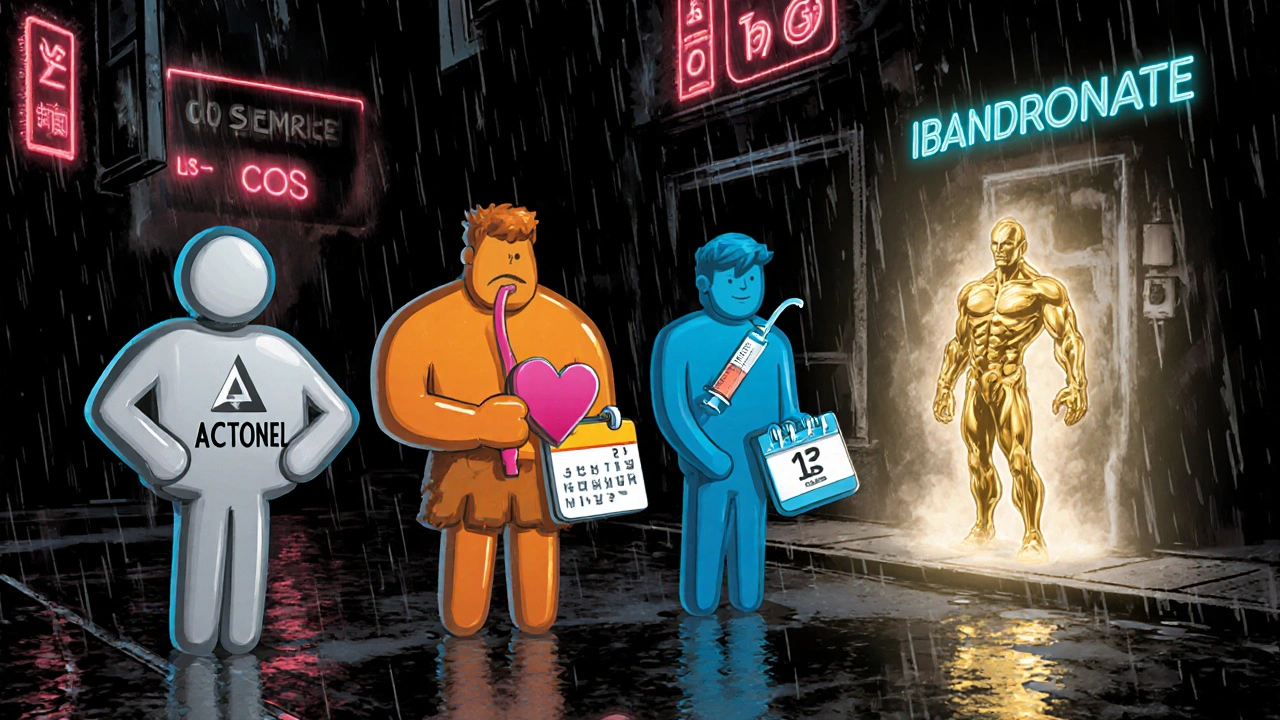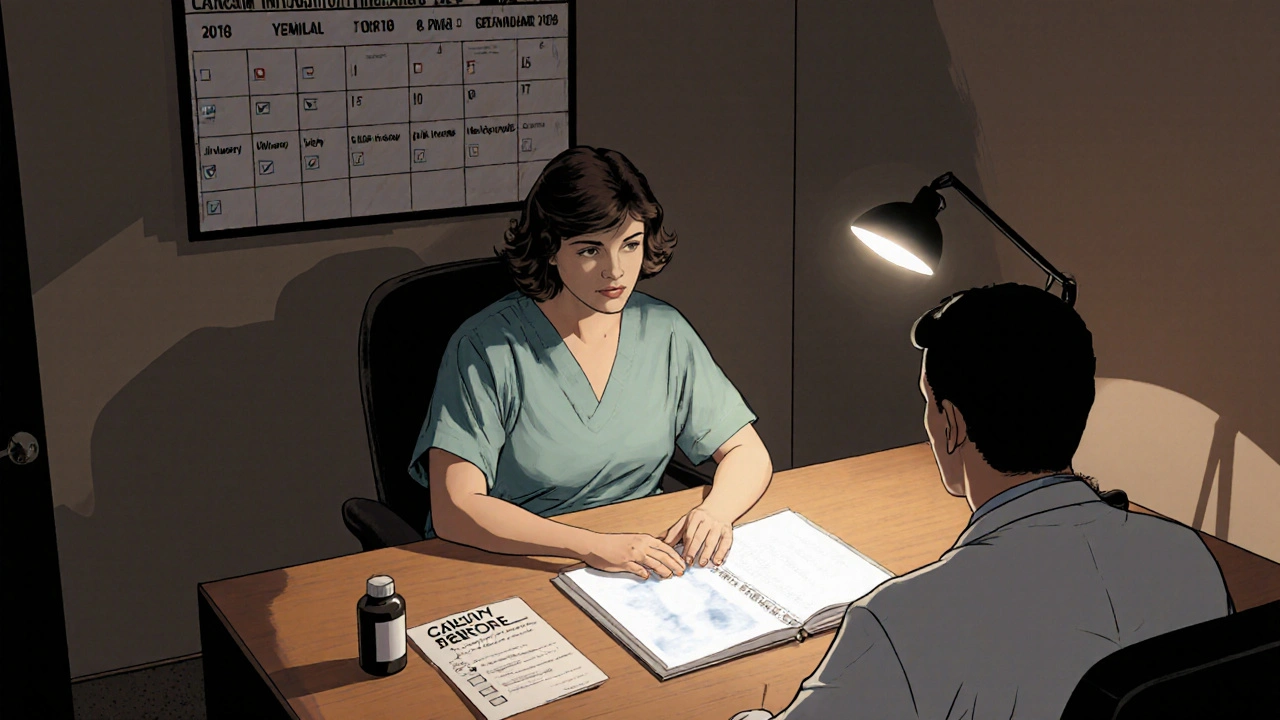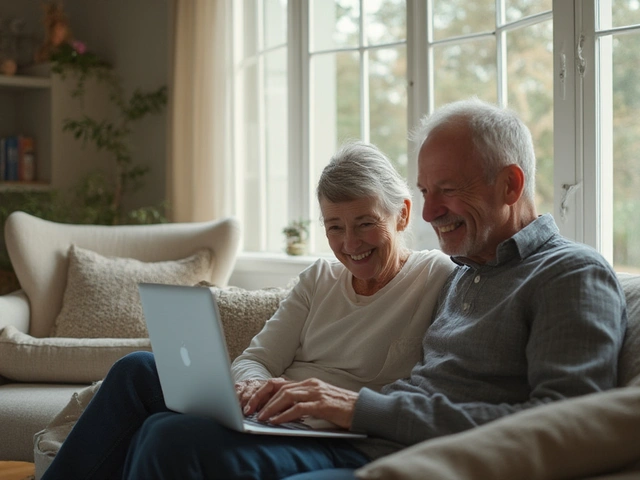Osteoporosis Medication Finder
Which Osteoporosis Medication Is Right for You?
Answer these brief questions to get personalized recommendations based on the latest clinical data.
Choosing a medication for osteoporosis can feel like navigating a maze of scientific terms, dosing schedules, and side‑effect warnings. You want a drug that actually strengthens bone, fits your lifestyle, and doesn’t leave you dealing with unexpected problems. This guide breaks down Actonel (risedronate) and stacks it against the most common alternatives so you can see which option lines up with your health goals.
Quick Takeaways
- Actonel is a once‑weekly oral bisphosphonate that blocks bone loss and is especially good for patients who prefer pills over infusions.
- Alendronate (Fosamax) is similar in action but usually taken daily or weekly, with a slightly higher risk of gastrointestinal irritation.
- Ibandronate (Boniva) offers a monthly oral dose or quarterly IV, making it convenient for people who miss weekly pills.
- Zoledronic acid (Reclast) is a once‑yearly IV infusion, ideal for those who want minimal dosing but requires a clinic visit.
- Regardless of the drug, adequate calcium, vitamin D, and regular bone mineral density (BMD) testing are non‑negotiable.
What Is Actonel (Risedronate)?
Actonel is a prescription‑only bisphosphonate that inhibits osteoclast‑mediated bone resorption. First approved by the U.S. Food and Drug Administration in 2000, it comes in 5mg and 35mg tablets taken once a week on an empty stomach. By attaching to bone mineral, risedronate makes it harder for the body to break down bone, gradually increasing bone mineral density (BMD) and lowering fracture risk.
How Do Bisphosphonates Work?
All the drugs we’ll compare belong to the bisphosphonate class. The core idea is simple: they bind to hydroxyapatite crystals in bone, and when osteoclasts try to resorb that bone, the drug triggers apoptosis (cell death) in those osteoclasts. The result is slower bone turnover and a net gain in bone mass.
Key Comparison Criteria
When you line up Actonel against other options, focus on these practical factors:
- Dosing convenience - weekly pill, monthly pill, quarterly IV, or yearly IV.
- Gastro‑intestinal tolerance - some bisphosphonates irritate the esophagus if not taken correctly.
- Renal safety - kidney function matters for IV forms.
- Cost and insurance coverage - out‑of‑pocket expenses vary widely.
- Evidence of fracture reduction - clinical trial data on hip, spine, and wrist fractures.

Side‑Effects at a Glance
All bisphosphonates share a core set of possible adverse events, but the frequency and severity differ. Common complaints include:
- Upper‑body esophageal irritation (especially with daily oral doses).
- Acute‑phase reaction after IV infusion - flu‑like symptoms, fever, muscle aches.
- Rare but serious: atypical femoral fracture or osteonecrosis of the jaw, usually after years of use.
Patients with swallowing problems or severe acid reflux often prefer the less‑frequent dosing formats of ibandronate or zoledronic acid.
Comparison Table: Actonel vs. Popular Alternatives
| Drug | Dose & Frequency | Typical Cost (AU$ per year) | GI Tolerance | Renal Considerations | Fracture‑Risk Reduction (clinical data) |
|---|---|---|---|---|---|
| Actonel (Risedronate) | 5mg or 35mg tablet, once weekly | ≈$250-$300 | Good if taken on empty stomach; mild esophageal irritation possible | Safe for eGFR ≥30mL/min | ≈35% reduction in vertebral fractures, 30% in hip fractures |
| Alendronate (Fosamax) | 70mg tablet, once weekly OR 10mg daily | ≈$200-$250 | Higher GI upset risk; strict upright posture required | Safe for eGFR ≥30mL/min | ≈40% vertebral, 25% hip fracture reduction |
| Ibandronate (Boniva) | 150mg tablet, once monthly OR 3mg IV, quarterly | ≈$300-$350 (IV slightly higher) | Better GI profile than weekly pills | IV form requires renal check (eGFR ≥30mL/min) | ≈30% vertebral fracture reduction; limited hip data |
| Zoledronic Acid (Reclast) | 5mg IV infusion, once yearly | ≈$500-$600 (often covered by Medicare) | No oral GI issues; flu‑like reaction possible after infusion | Requires eGFR ≥35mL/min; caution in severe renal impairment | ≈41% vertebral, 35% hip fracture reduction |
Deep Dive: Each Alternative Explained
Alendronate (Fosamax)
Alendronate is the most widely prescribed bisphosphonate worldwide. Its daily dose can be easier for patients who struggle with a weekly schedule, but the drug sits directly on the esophageal lining for longer, raising the chance of heartburn or ulceration. Studies published in the *New England Journal of Medicine* (2001) showed a 40% drop in vertebral fractures among post‑menopausal women.
Ibandronate (Boniva)
Ibandronate offers a monthly oral tablet that many patients find more tolerable. The quarterly IV version is administered in a clinic, which eliminates daily pill fatigue. Clinical data from a 2003 *JAMA* trial indicated a 30% reduction in new vertebral fractures, but hip outcomes were less clear.
Zoledronic Acid (Reclast)
Zoledronic acid is a potent IV bisphosphonate given once a year. Because the dose is high, the drug produces a brief flu‑like reaction in about 30% of patients, usually within 24hours. A landmark *Lancet* study (2007) demonstrated the strongest hip‑fracture protection among oral agents, with a 35% risk reduction.

Putting It All Together: How to Choose
There’s no one‑size‑fit answer, but ask yourself these three questions:
- Do I remember to take a weekly pill? If yes, Actonel or Alendronate fits. If you forget often, consider the monthly ibandronate tablet or the yearly zoledronic infusion.
- Do I have acid reflux or a history of esophageal issues? Oral bisphosphonates can irritate the esophagus. In that case, a IV option (zoledronic) or the less‑frequent ibandronate may be safer.
- What does my insurance cover? In Australia, the Pharmaceutical Benefits Scheme (PBS) subsidizes all four drugs, but the level of co‑payment varies. Check the PBS schedule for the latest figures.
Whatever you pick, pair the medication with adequate calcium (1,000-1,200mg daily) and vitamin D (800-1,000IU daily). Also schedule a dual‑energy X‑ray absorptiometry (DXA) scan-our technical term for a bone mineral density test-every 1-2years to track progress.
Safety Checklist Before Starting Therapy
- Confirm renal function (eGFR ≥30mL/min for oral, ≥35mL/min for IV).
- Review current meds for potential interactions (e.g., NSAIDs can increase GI risk).
- Ensure you can stay upright for at least 30minutes after taking any oral bisphosphonate.
- Discuss any planned dental work; ask your dentist about jaw‑bone health.
Frequently Asked Questions
Can I switch from Actonel to another bisphosphonate?
Yes. Most doctors recommend a brief drug‑free interval (usually 7-14days) before starting the new medication to avoid overlapping effects. Your doctor will tailor the switch based on bone density results and any side‑effects you experienced.
What should I do if I miss a weekly Actonel dose?
Take the missed tablet as soon as you remember-provided it’s been less than 24hours-and then resume your regular schedule. If more than 24hours have passed, skip the missed dose and continue with the next scheduled day. Do not double‑dose.
Is it safe to take calcium supplements with Actonel?
Yes, but separate them by at least two hours. Calcium can bind to risedronate in the stomach and reduce absorption, so take Actonel with plain water first, wait 30minutes, then have your calcium.
What are the signs of an atypical femur fracture?
Persistent thigh or groin pain, especially after activity, can signal an impending atypical fracture. If you notice these symptoms, stop the bisphosphonate and seek an X‑ray promptly.
How often should I have a DXA scan while on treatment?
Guidelines suggest a baseline scan, then a follow‑up at 1-2years to gauge response. If BMD stabilizes, extend intervals to every 2-3years, unless you have risk factors that warrant closer monitoring.
Remember, the “best” drug is the one that fits your health profile, daily routine, and budget. Talk with your GP or an osteoporosis specialist, discuss the table above, and decide together which path leads to stronger bones and fewer fractures.






Keelan Walker
October 15, 2025 AT 18:00Hey folks I just wanted to say that navigating the sea of osteoporosis meds can feel overwhelming 😅.
The guide does a solid job laying out the basics of Actonel versus its cousins and that’s already a win.
You’ll notice that the weekly pill schedule can actually fit nicely into a coffee routine if you set a reminder on your phone.
For those who dread choking down tablets the monthly ibandronate or yearly zoledronic infusion can be a real lifesaver.
The GI side‑effects tend to hover around the esophagus so taking the tablet with plain water and staying upright is a simple hack.
Kidney function is another piece of the puzzle especially when you consider the IV options which need a decent eGFR reading.
Cost is often the hidden villain but many insurance plans cover at least one of these therapies and the PBS in Australia helps too.
Remember that calcium and vitamin D are the backstage crew that keep the show running no matter which drug you pick.
A baseline DXA scan then a follow up every one to two years will let you and your doctor see the bone density trend.
If you ever feel a twinge in your thigh or groin keep an eye out for atypical femur fracture signs and call your doc promptly.
Switching drugs isn’t a big drama you just need a short drug‑free window and your new prescription will take over the battlefield.
Some people find the flu‑like reaction after the yearly infusion a bit annoying but it usually fades in a day or two.
The overall fracture risk reduction numbers show that each option has its own sweet spot depending on your personal risk profile.
Talk with your GP about your lifestyle schedule kidney health and budget and together you’ll land on the most suitable choice.
Stay hopeful keep that bone health conversation going and you’ll walk out of the maze stronger than ever 🚀.
Heather Wilkinson
October 16, 2025 AT 21:46Great rundown! I love how the table makes the comparison crystal clear 😊.
If you’re worried about stomach upset, the monthly ibandronate really feels kinder on the gut.
Don’t forget to keep that calcium and vitamin D combo flowing – it’s the secret sauce behind any bisphosphonate.
And a quick reminder: stay upright for at least 30 minutes after taking the pill, it makes a world of difference.
Keep the conversation going, you’ve got this!
Henry Kim
October 18, 2025 AT 01:33I appreciate the thoroughness of this guide; it eases the anxiety around choosing a therapy.
The weekly Actonel schedule works well for people with a steady routine.
If esophageal irritation is a concern, the monthly option might be a gentler alternative.
Regular DXA scans will keep you informed about progress.
Neha Bharti
October 19, 2025 AT 05:20One could view each medication as a different path on the same journey toward stronger bones.
Choosing wisely means aligning the path with your daily rhythm and health canvas.
Balance the practicality of dosing with the body’s own signals.
Samantha Patrick
October 20, 2025 AT 09:06Here’s a quick cheat‑sheet: actonel is weekly, alendronate can be weekly or daily, ibandronate is monthly oral or quarterly IV, zoledronic is yearly IV.
If you’re worry about esophaege irritation, try ibandronate or zoledronc.
Make sure your eGFR is above 30 for oral and 35 for IV – that’s a common cutoff.
Don’t forget to separate calcium from the bisphos from at least two hours apart to avoid absorption issues.
Hope this helps u navigate the maze!
Christopher Pichler
October 21, 2025 AT 12:53Interesting points raised above – the pharmacokinetic profile of risedronate, with its high affinity for hydroxyapatite, does indeed limit systemic exposure, which arguably reduces off‑target adverse events.
However, the esophageal mucosal irritation risk persists if the administration protocol is not strictly followed, a nuance sometimes under‑emphasized in patient education materials.
VARUN ELATTUVALAPPIL
October 22, 2025 AT 16:40Wow!!!! This whole discussion is like a massive pharmacy aisle exploding with options!!!
But seriously!!! Remember to check your renal clearance before picking an IV!!!
And don’t forget the calcium!!! It’s the real MVP!!!
April Conley
October 23, 2025 AT 20:26Pick what works for you.
Sophie Rabey
October 25, 2025 AT 00:13Sure, the weekly pill sounds convenient until you realize you have to remember it between coffee and cereal.
Meanwhile, the yearly infusion is basically a “set it and forget it” deal, but you pay for the clinic vibes.
Side‑effects? Yeah, every bisphosphonate comes with the usual GI drama or flu‑like cameo after the IV.
Bottom line: match the regimen to your schedule, not the other way around.
Bruce Heintz
October 26, 2025 AT 03:00Thanks for the detailed breakdown! 😃
It really helps to see the pros and cons side by side.
If you’re leaning toward Actonel, just remember the 30‑minute upright rule.
And keep that vitamin D level topped up – it makes the meds work better :)
richard king
October 27, 2025 AT 06:46Amid the clinical lexicon, one hears the echo of a single truth: bone health is a saga, not a sprint.
Each bisphosphonate writes its own stanza, whether whispered weekly or proclaimed yearly.
The patient’s narrative, however, must dictate the cadence, lest the medication become a discordant note.
Thus, harmonize dosing rhythm with lifestyle, honor renal thresholds, and let calcium and vitamin D be the steady percussion.
In doing so, the melody of stronger bones may finally resolve.